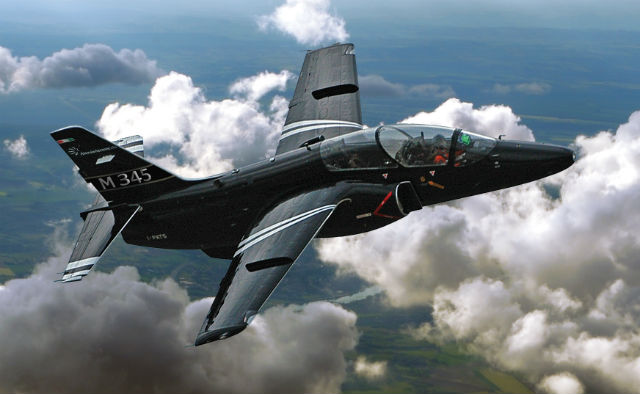Alenia Aermacchi has selected the Williams International FJ44-4M turbofan to power its M-345 intermediate trainer, with the engine supplier having beaten rival proposals from Honeywell and Pratt & Whitney.
The M-345 is being developed from the legacy M-311 platform, and Alenia Aermacchi will shortly begin integration work on the 3,400lb-thrust power plant for installation on its flight-test aircraft, replacing its existing P&W Canada JT15D.
Alenia says it picked the FJ44 due to its performance in the business aviation sector and in service with the Swedish air force, which selected the turbofan to re-engine its fleet of Saab 105s.
First flight of the reconfigured jet is anticipated for the final quarter of 2015, says the airframer. New-build prototypes would then arrive from the end of 2016, ahead of service entry with the Italian air force in 2017.
Final assembly of the M-345 – dubbed the High Efficiency Trainer – will take place at Alenia's Venegono Superiore facility in the north of Italy, but it has yet to decide where the fuselage and wings will be manufactured.
"It could be in another country. It is intended that only the final assembly line is in Venegono," it says.

Alenia Aermacchi
So far, only Rome has committed to the new type, having expressed interest in up to 30 examples, but the manufacturer anticipates a total market for the M-345 of 250 units worldwide.
A number of other nations have expressed interest in the programme, it says, "because many countries have realised that jumping from a turboprop to a frontline fighter is not so easy".
Meanwhile, Alenia says it is in the early stages of evaluating a clean-sheet turboprop-powered trainer to replace its SF-260 screener aircraft.
The backlog for the type has dwindled to just six examples destined for an undisclosed African customer, with the first two of these to be delivered next month.
Alenia sees a new design with a carbonfibre airframe as being able to challenge the Grob Aircraft G120TP and Airbus Defence & Space PZL-130 Orlik.
It plans to define the requirements for the aircraft in conjunction with Italy's air force, but anticipates it having the same maximum take-off weight and power as the SF-260.
Source: Flight International























